It looks like you're using an Ad Blocker.
Please white-list or disable AboveTopSecret.com in your ad-blocking tool.
Thank you.
Some features of ATS will be disabled while you continue to use an ad-blocker.
share:
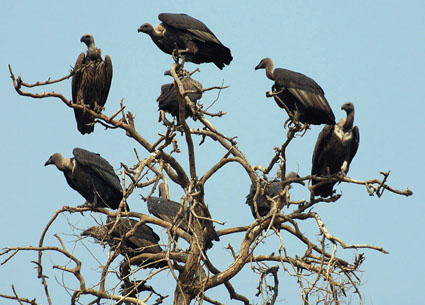
In a world obsessed with outward appearance, life is tough for vultures and if the heavy beating they received from the ugly stick were not enough, they are often used as a synonym for the worst of human behaviours. And yet, it wasn’t always this way, at one time their unique qualities were appreciated, their role as carrion eaters was not only valued but considered a divine attribute. Today though, of the 23 species of vultures worldwide, 14 are listed as endangered or threatened. While their dietary habits may be distasteful to contemplate, these amazing birds serve a vital function which aids in the prevention of disease. Their stomachs contain acids capable not only of digesting their fetid meals but which also kill the most virulent bacteria, neutralising the disease potential of the dead and decaying. As conservationist Simon Thomsett explains; "Every visitor to Africa assumes that the major consumers of wild animals are lions, hyenas, leopards, cheetahs, wild dogs and jackals. But they are not."
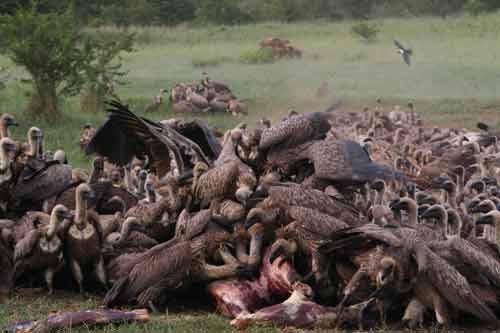
In the Serengeti alone, 40 million tonnes of biomass are produced due to the death of grazing animals, 64% of which the vultures dispose of. In India where vulture numbers have fallen by 99.9%, the vacuum that they have left in the food chain has been filled by feral dogs. While dogs are able to digest carrion, unlike the vultures they do not possess the ability to neutralise the diseases and bacteria that rotting meat carries. As a direct result the instances of rabies in India have risen dramatically. In India this drastic demise of vulture numbers has also had a knock on effect on the traditional excarnation practices of the Parsee Zoroastrians.
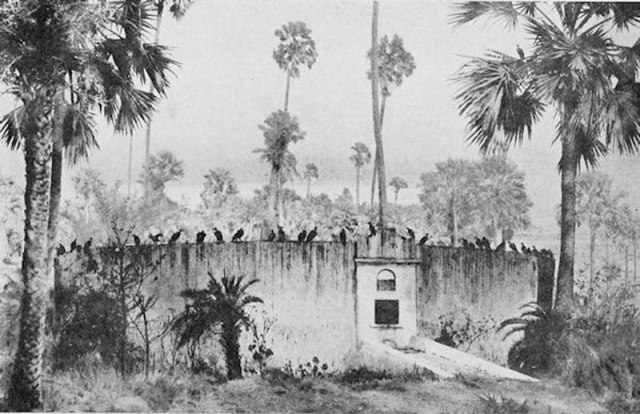
Excarnation is a method of disposing of the dead that relies upon exposure to natural processes to hasten decomposition. In recent weeks, the big news in archaeology has been the release of the findings of an extensive study utilising remote sensing technologies and geophysical surveys to uncover a hidden landscape of mysterious ritual structures surrounding Stonehenge. Amongst the new finds announced was a long barrow burial mound that predates Stonehenge.
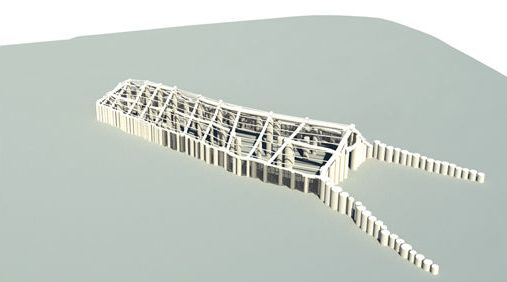
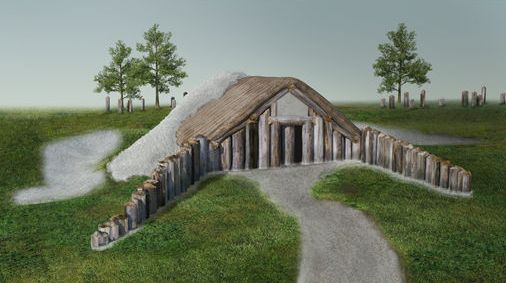
The people who constructed this house of the dead are believed to have carried out complex burial rituals. “The rituals included exposure of the dead bodies, and defleshing,” according to Professor Wolfgang Neuber of the Ludwig Boltzmann Institute. While such practices may be alien and macabre to us, the evidence suggests that such techniques were once widespread.
By the late Neolithic, or Chalcolithic Age, immediately prior to the rise of the Bronze Age excarnation seems to have been the chosen means of disposing of the dead and may have been associated with ancestor worshipper, indicated by the frequent removal of, and separate treatment of the heads . At archaeological sites the discovery of metatarsals, the bones of the fingers and toes, in isolation, are considered an indicator of excarnation. It is thought likely that the dead were laid on a woven litter or placed on an altar and that these bones, given their small size, could easily be overlooked, having fallen or rolled away during the excarnation process leaving a tell-tale sign of disposal via exposure to nature.
Once all the flesh had been removed from the skeleton, the bones were often collected and stored in ossuaries. Ossuaries take numerous forms, from being relatively portable, in the form of boxes or vessels, to pits or the large burial mounds which became a recognisable feature of the human landscape, like the barrow house near Stonehenge or the West Kennet Long Barrow near Avebury, constructed around 3650 BCE, which held a jumble of bones representing the incomplete remains of 46 individuals.
edit on 25-9-2014 by KilgoreTrout because: dagnammit!
edit on 25-9-2014 by KilgoreTrout because: I'm crap, that's
why!
Ossuaries, similar to the examples above, have been found throughout Europe and the Near East indicative of some form of excarnation being ritually
practiced throughout the Neolithic Age but the discovery of the Bodo Cranium in 1976 invites a tantilising glimpse into the practices described by
Professor Neuber being older even than our own branch of humanity.
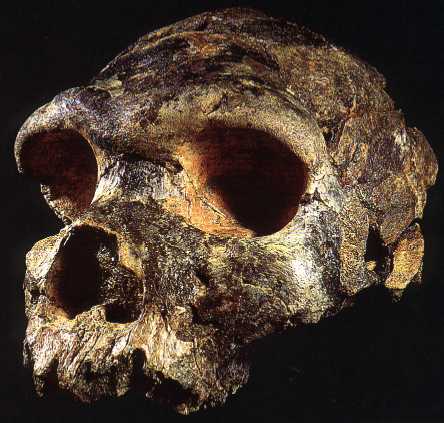
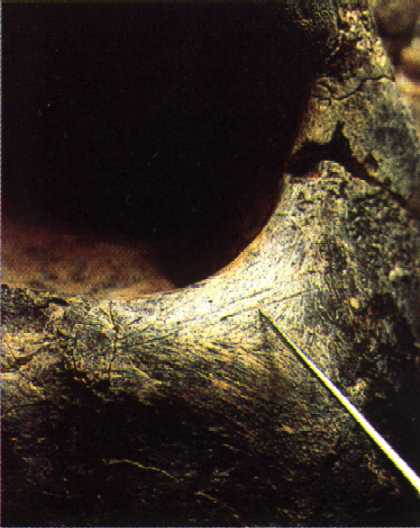
The fossilised partial skull found in the Awash River valley in Ethiopia is 600,000 years old and though it’s species is somewhat debated, it’s brain size was very close to that of our own. Acheulean hand axes and cleavers, alongside animal bones, recovered from the same site have led to the conclusion that Bodo used these tools to butcher animals. More interestingly, the skull itself, under microscopic examination, has revealed marks consistent with the flesh having been removed immediately after death. Though the purpose of this defleshing cannot be known, it is feasible that Bodo’s compatriots understood that the dead posed a risk to the well-being of the group and needed to be disposed of with expediency. By removing the flesh and soft tissue the bones could be retained, and perhaps revered, as well as making it easier for scavengers to carry away and consume.
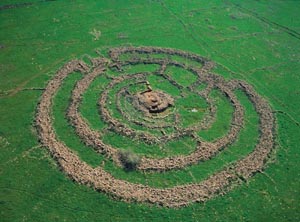
The Levantine megalithic complex of Rogem Hiri in the Golan, a site utilised between 4500 and 3500 BCE, comprises of four concentric stone walls which enclose a pile of stones that researchers believe was once an altar on which the dead were exposed. The walls may have served to deter ground dwelling carrion foragers while favouring the birds. At South Ronaldsay in the Orkney Isles, the burial cairn has been given the title the Tomb of the Eagles due to the discovery, in addition to 16,000 human bones, of 725 bird bones, largely those of the White-tailed Sea Eagle. The human bones, representing the remains of 340 people are disarticulated, weathered and sun bleached. At Boscombe Down, a ossuary pit has been discovered along with a series of posts that archaeologists believe may once have been a platform on which the dead were placed in offering to the birds.
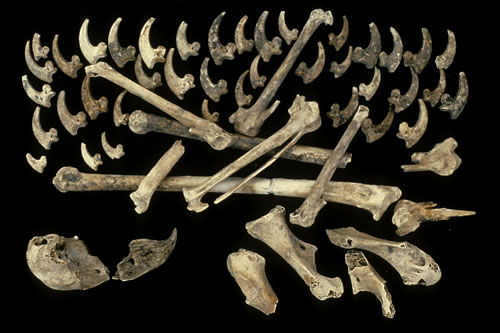
Such ancient practices are reminiscent of those of the Native Americans as reported by the first western. In Hawaii too, prior to first contact with the west, the islanders were said to deflesh the bodies of their chieftains in order to preserve their bones, a practice which for them was bound with elements of ancestor worship. It is however the relationship with the carrion birds who consume the dead that has left a lasting legacy on our perceptions of death, and, helped to develop our concept of an afterlife. What all cultures, past and present seem to share in common are beliefs centred in Animism, as Lewis Spence put it in his book on Egyptian mythology, animism is “...the belief that practically every object in the universe surrounding man has a soul and personality such as he himself possesses. Man at an early date of his consciousness formulated the belief in a soul, that mysterious second self...The phenomenon of sleep, the return to consciousness after slumber, and the strange experience of life and adventures in dreamland while asleep would force early man to the conclusion that he possessed a double or second self, and it was merely an extension of that idea which made him suppose that this secondary personality would continue to exist after death.”


The fossilised partial skull found in the Awash River valley in Ethiopia is 600,000 years old and though it’s species is somewhat debated, it’s brain size was very close to that of our own. Acheulean hand axes and cleavers, alongside animal bones, recovered from the same site have led to the conclusion that Bodo used these tools to butcher animals. More interestingly, the skull itself, under microscopic examination, has revealed marks consistent with the flesh having been removed immediately after death. Though the purpose of this defleshing cannot be known, it is feasible that Bodo’s compatriots understood that the dead posed a risk to the well-being of the group and needed to be disposed of with expediency. By removing the flesh and soft tissue the bones could be retained, and perhaps revered, as well as making it easier for scavengers to carry away and consume.

The Levantine megalithic complex of Rogem Hiri in the Golan, a site utilised between 4500 and 3500 BCE, comprises of four concentric stone walls which enclose a pile of stones that researchers believe was once an altar on which the dead were exposed. The walls may have served to deter ground dwelling carrion foragers while favouring the birds. At South Ronaldsay in the Orkney Isles, the burial cairn has been given the title the Tomb of the Eagles due to the discovery, in addition to 16,000 human bones, of 725 bird bones, largely those of the White-tailed Sea Eagle. The human bones, representing the remains of 340 people are disarticulated, weathered and sun bleached. At Boscombe Down, a ossuary pit has been discovered along with a series of posts that archaeologists believe may once have been a platform on which the dead were placed in offering to the birds.

Such ancient practices are reminiscent of those of the Native Americans as reported by the first western. In Hawaii too, prior to first contact with the west, the islanders were said to deflesh the bodies of their chieftains in order to preserve their bones, a practice which for them was bound with elements of ancestor worship. It is however the relationship with the carrion birds who consume the dead that has left a lasting legacy on our perceptions of death, and, helped to develop our concept of an afterlife. What all cultures, past and present seem to share in common are beliefs centred in Animism, as Lewis Spence put it in his book on Egyptian mythology, animism is “...the belief that practically every object in the universe surrounding man has a soul and personality such as he himself possesses. Man at an early date of his consciousness formulated the belief in a soul, that mysterious second self...The phenomenon of sleep, the return to consciousness after slumber, and the strange experience of life and adventures in dreamland while asleep would force early man to the conclusion that he possessed a double or second self, and it was merely an extension of that idea which made him suppose that this secondary personality would continue to exist after death.”
Cultures throughout the world believed that the human soul took the form of a bird at death. Amongst the Mesopotamians, in the Descent of Ishar, the
souls of the dead take bird forms. In Latin, ‘aves’ denotes both birds and ancestral spirits, such as ghosts and angels and the godhood of Roman
emperors was symbolised by the release of an eagle over the funeral pyre that was believed to carry his soul up to the heavens. Pliny, reporting on
the death of Aristeas of Procconnesus, states that his soul was seen to leave his mouth in the shape of a raven, which is startlingly similar to the
Boros of Brazil belief that the soul issues from the mouth upon death, in the form of a bird.
The magical power of flight and their freedom to explore both land and air, imbued in our ancestors the belief that birds were heavenly messengers, holders of occultic knowledge and deliverers of omens, and those who, like the Trojan Cassandra, were gifted the ability to understand the language of the birds, were considered oracles and prophets of the gods. The wise old owl’s hoot transmitted the secrets of the night, doves and nightingales told of the mysteries of love and eagles were angels who could foretell the future.
No matter how far removed we are from our origins within nature, we all seem to share this common thread. All our religions at one time resounded within a core of shamanism that was shaped by and adapted to the places and environments in which we chose to throw away nomadism and settle. Siberian shamans each possessed their own bird of prey mother, whose shape and form they would assume in trance states, reminiscent of the “soul flights” undertaken by the priests of the Aztecs and Mayans. This bird mother would appear to them twice, at their symbolic death of initiation, and again when they were ‘reborn’ almost a mirror of the appearance of the dove in the story of Jesus at his baptism and death. This belief in common that birds served as divine messengers, as carrier of souls to the heavens, reverberates throughout the world and wherever are found vultures finds literal translation into action.
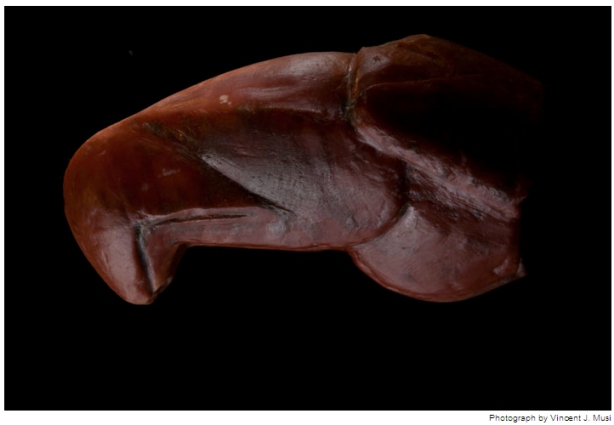
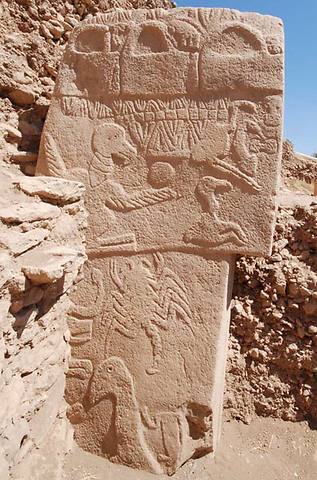
The shamanic role as intermediary between life and death can be found amongst the earliest finds in Eurasia. A shrine at Gobekli Tepe was found to contain a votive sculpture of a vultures head, and one of the stone pillar relief carvings bears a vulture’s likeness. The earliest settlements in the area reflect the veneration of vultures and their direct association with death. At Nevali Cori sculptures and carvings depict shaman-like figures wearing headdresses and robes of vulture feathers, while at the even older site of Zawi Chemi Shanidar, dated to have been used from around 11,000BC, Ralph Solecki’s team, excavating the site in the 1950s, discovered a cache of wing bones belonging to eagles and vultures which are suggestive of ritual usage. At Catal Huyuk, a wall frieze pictures vultures hovering over the headless bodies of men and another is believed to show them over high towers or platforms.
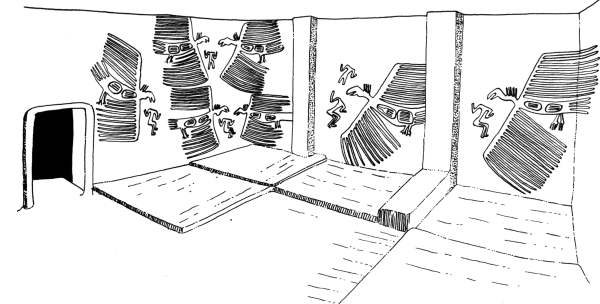

The magical power of flight and their freedom to explore both land and air, imbued in our ancestors the belief that birds were heavenly messengers, holders of occultic knowledge and deliverers of omens, and those who, like the Trojan Cassandra, were gifted the ability to understand the language of the birds, were considered oracles and prophets of the gods. The wise old owl’s hoot transmitted the secrets of the night, doves and nightingales told of the mysteries of love and eagles were angels who could foretell the future.
No matter how far removed we are from our origins within nature, we all seem to share this common thread. All our religions at one time resounded within a core of shamanism that was shaped by and adapted to the places and environments in which we chose to throw away nomadism and settle. Siberian shamans each possessed their own bird of prey mother, whose shape and form they would assume in trance states, reminiscent of the “soul flights” undertaken by the priests of the Aztecs and Mayans. This bird mother would appear to them twice, at their symbolic death of initiation, and again when they were ‘reborn’ almost a mirror of the appearance of the dove in the story of Jesus at his baptism and death. This belief in common that birds served as divine messengers, as carrier of souls to the heavens, reverberates throughout the world and wherever are found vultures finds literal translation into action.


The shamanic role as intermediary between life and death can be found amongst the earliest finds in Eurasia. A shrine at Gobekli Tepe was found to contain a votive sculpture of a vultures head, and one of the stone pillar relief carvings bears a vulture’s likeness. The earliest settlements in the area reflect the veneration of vultures and their direct association with death. At Nevali Cori sculptures and carvings depict shaman-like figures wearing headdresses and robes of vulture feathers, while at the even older site of Zawi Chemi Shanidar, dated to have been used from around 11,000BC, Ralph Solecki’s team, excavating the site in the 1950s, discovered a cache of wing bones belonging to eagles and vultures which are suggestive of ritual usage. At Catal Huyuk, a wall frieze pictures vultures hovering over the headless bodies of men and another is believed to show them over high towers or platforms.


Africa, like India, has seen a calamitious decline in culture populations, with numbers falling by at least 90% in recent years. The Swahili call the
vulture ‘Tumbuzi’ or the one who disembowels but within many African cultures the vultures are ‘soul birds’. The Yoruba consider them
mediators with the gods, their role in ritual sacrifice is considered essential to success and they say a prayer, the Igun Salagerje, to the
vulture;
“Come and eat our sacrifice! So that the sacrifice may be taken away by the gods! Without the vulture no one can perform a sacrifice or propitiation, nor can we perform divination. Vulture, come and eat!”
Much of this reverence lies in the awareness that vultures make a life out of death, and in doing so, limit the spread of carrion borne diseases, an understanding that they share with the Zoroastrians who categorise disease and pestilence as demonic spirits and forces.

According to the Zoroastrian text, theVendidad, the flesh is corruptible and subsequently a pollutant. This polluting potential increases according to the righteousness of the deceased in life, it being their belief that the death of the righteous is a victory of evil, as such, they believe that upon death evil forces or demons will inhabit the shell that the departed soul has vacated. This evil will infect everything that it comes into contact with and so the Vendidad instructs that the dead should be stripped of all clothing, scrubbed clean and carried by two Nasellars, or corpse-bearers to be placed in the Dakhma or Tower of Silence. There the birds will consume the flesh and the sun bleach the bones, between them expunging all evil and avoiding all contamination of earth, water and fire.
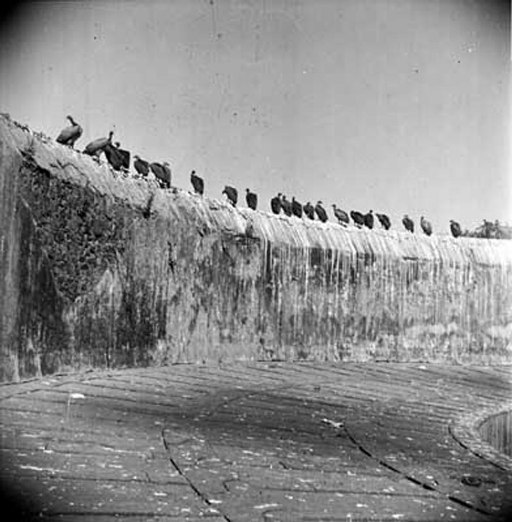
The Dakhma is a complex repository for the dead, designed to limit any possibility of corruption escaping. The structure is cyclindrical in shape, topped by a stone paved roof surrounded by an enclosing wall within which are arranged concentric circles. In the outer circle the bodies of the men are placed, the second circle the women and in the third, children. In the centre is a pit or ossuary, into which the bones, once defleshed by the birds and cleansed by the sun, are deposited. A series of wells and filters ensure that not a drop of demonic essence is able to escape. The Naseller upon returning from their task, would wash themselves in the urine of cattle, considered a disinfectant in ancient times and special verses would be recited to further ward off evil.

Zoroastrianism was once the state religion of the Achaemenid Empire which at it’s greatest extent, around 480 BCE, enveloped 50 million people, then, 44 % of the world’s population, ranking it the largest human empire ever. It is perhaps due to this that the estimates of those who currently practice Zoroastrianism vary so greatly as being between 145,000 and 2.6 million, their spread being so vast geographically. Most Zoroastrians have adopted the burial laws of the lands in which they now reside, usually burial or cremation, it was only in Iran and India, which have the largest Zoroastrian communities, that excarnation remained reasonably widespread. In 1970 the Iranians banned the use of dakhmas, and while the Parsee Zoroastrians of India still uphold the practice in Karachi and Mumbai, it is becoming increasingly difficult for them to do so due to the massive decline in vulture numbers.
“Come and eat our sacrifice! So that the sacrifice may be taken away by the gods! Without the vulture no one can perform a sacrifice or propitiation, nor can we perform divination. Vulture, come and eat!”
Much of this reverence lies in the awareness that vultures make a life out of death, and in doing so, limit the spread of carrion borne diseases, an understanding that they share with the Zoroastrians who categorise disease and pestilence as demonic spirits and forces.

According to the Zoroastrian text, theVendidad, the flesh is corruptible and subsequently a pollutant. This polluting potential increases according to the righteousness of the deceased in life, it being their belief that the death of the righteous is a victory of evil, as such, they believe that upon death evil forces or demons will inhabit the shell that the departed soul has vacated. This evil will infect everything that it comes into contact with and so the Vendidad instructs that the dead should be stripped of all clothing, scrubbed clean and carried by two Nasellars, or corpse-bearers to be placed in the Dakhma or Tower of Silence. There the birds will consume the flesh and the sun bleach the bones, between them expunging all evil and avoiding all contamination of earth, water and fire.

The Dakhma is a complex repository for the dead, designed to limit any possibility of corruption escaping. The structure is cyclindrical in shape, topped by a stone paved roof surrounded by an enclosing wall within which are arranged concentric circles. In the outer circle the bodies of the men are placed, the second circle the women and in the third, children. In the centre is a pit or ossuary, into which the bones, once defleshed by the birds and cleansed by the sun, are deposited. A series of wells and filters ensure that not a drop of demonic essence is able to escape. The Naseller upon returning from their task, would wash themselves in the urine of cattle, considered a disinfectant in ancient times and special verses would be recited to further ward off evil.

Zoroastrianism was once the state religion of the Achaemenid Empire which at it’s greatest extent, around 480 BCE, enveloped 50 million people, then, 44 % of the world’s population, ranking it the largest human empire ever. It is perhaps due to this that the estimates of those who currently practice Zoroastrianism vary so greatly as being between 145,000 and 2.6 million, their spread being so vast geographically. Most Zoroastrians have adopted the burial laws of the lands in which they now reside, usually burial or cremation, it was only in Iran and India, which have the largest Zoroastrian communities, that excarnation remained reasonably widespread. In 1970 the Iranians banned the use of dakhmas, and while the Parsee Zoroastrians of India still uphold the practice in Karachi and Mumbai, it is becoming increasingly difficult for them to do so due to the massive decline in vulture numbers.
The decimation of the Indian vulture is due to the widespread use of Diclofenac for treating livestock. Veterinary Diclofenac is used to treat pain
and inflamation in cattle, and is often administered when the animal is close to death. In South-East Asia, dead cattle are usually disposed of in
designated dump sites which are accessible to carrion feeders. When vultures were observed to be dying in large numbers, analysis of their remains
revealed high levels of Diclofenac in their systems which had led to catastrophic liver and kidney failure. In 2006 the drug’s use was banned in
India, and captive breeding programmes, particularly amongst the Parsee hope to help restore the vulture population. The drug however is still in use
in areas outside of Indian jurisdiction, including those bordering Tibet the other major culture that still practices a form of excarnation, the Sky
Burial or Jhator.
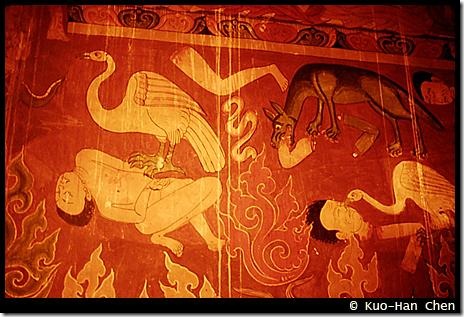
Zoroaster and Buddha share numerous similarities and they laid comparative, if divergent, paths towards the attainment spiritual of enlightenment and (re)unification with the creator. The Tibetan Sky Burial was first documented in the Book of the Dead around the 12th century, while the Zoroastrians adoption of excarnation while practiced in some areas for at least 3,000 years, was indoctrinated as the official means of disposal of the dead during the Sassanid period, between the 3rd to 7th centuries, and is recorded in some detail in the Rivayat and Saddars. The Persians considered fire to be sacred and so, unlike the Greeks and Romans, considered cremation sacrilegious.
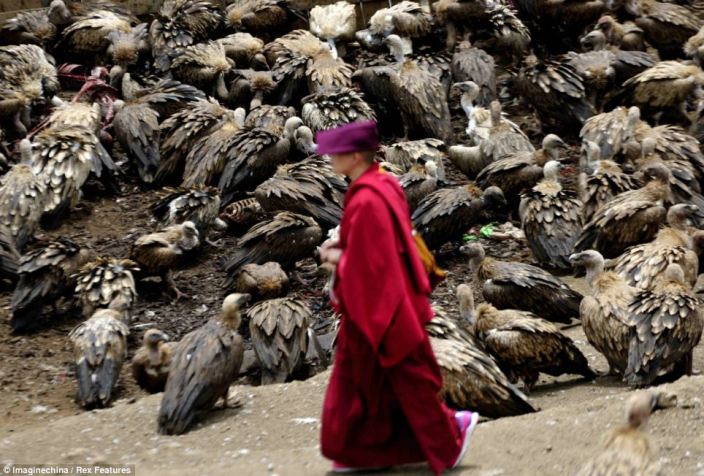
Jhator is the “giving of alms to birds” and is considered a fitting way in which to both express thanks and to compensate for consumption of meat during life. The Tibetans of course believe that the soul departs the body soon after death, transmigrating to a new body and new life, therefore, once dead, there is only meat, food for the vultures. The Rogyapa, or ‘breaker of bodies’ perform their task, with the same detached professionalism as a butcher, rendering the dead into bite sized pieces. As a mountain people to whom soil and wood are a scarce resource, every part of the body is given over to the vultures to consume with even the bones being ground down for the vultures to eat. Not a morsel is wasted.
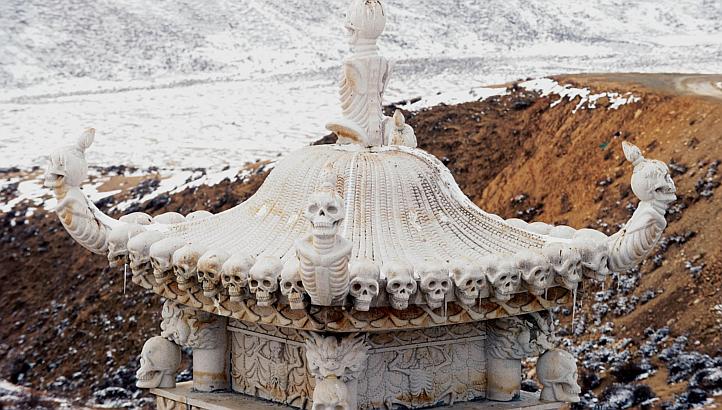
Tibet, prior to the arrival of Buddhism 2,300 years ago, or thereabouts, was governed by kings or chiefs who were believed to have descended from the heavens via a magical ladder, an axis mundi which linked the three worlds of existence. The Bön religion that the people practiced was shamanic in nature and while Jhator is not understood to have been practiced, the spiritual nature of the sky and the birds was integral to their beliefs. The vulture, or God –bird, was considered to be particularly sacred, regarded as a Dakini, or feminine sky spirit. Much like the Egyptian Nekhmet, the vulture was considered a protector spirit, associated with motherhood and bestowing of divine king ship.
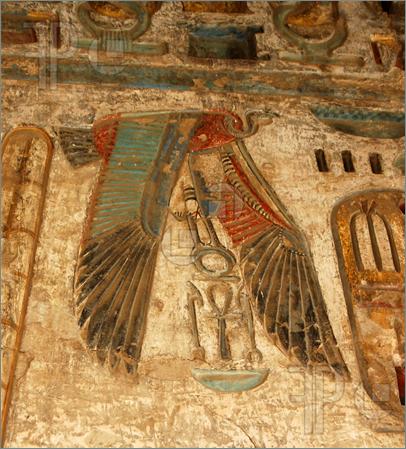

Today in the west this heritage has long been forgotten. In North America and much of Europe the vulture was erroneously associated with the spread of disease and suffered widespread, often systemised, persecution that led to them teetering on the precipice of extinction. While they are now protected species in most countries they are now under threat from the continuing use of Diclofenac.
Despite the Indian ban on diclofenac and it’s known toxic effect on vultures, it has recently been approved for use in Italy and Spain, home to the Griffon Vulture. Jose Taveres, director of the Vulture Conservation Foundation; "It defies common sense to approve of a drug when there is abundant, solid evidence to show that it is deadly to so many species of birds and that it causes such ecological damage. We now know diclofenac was responsible for the deaths of tens of millions of vultures in India. Several species were brought to the brink of extinction in the process. Once the Indian government realised that, it banned diclofenac. That was in 2006. Now two countries in Europe have decided to give it the go-ahead. It is simply appalling."
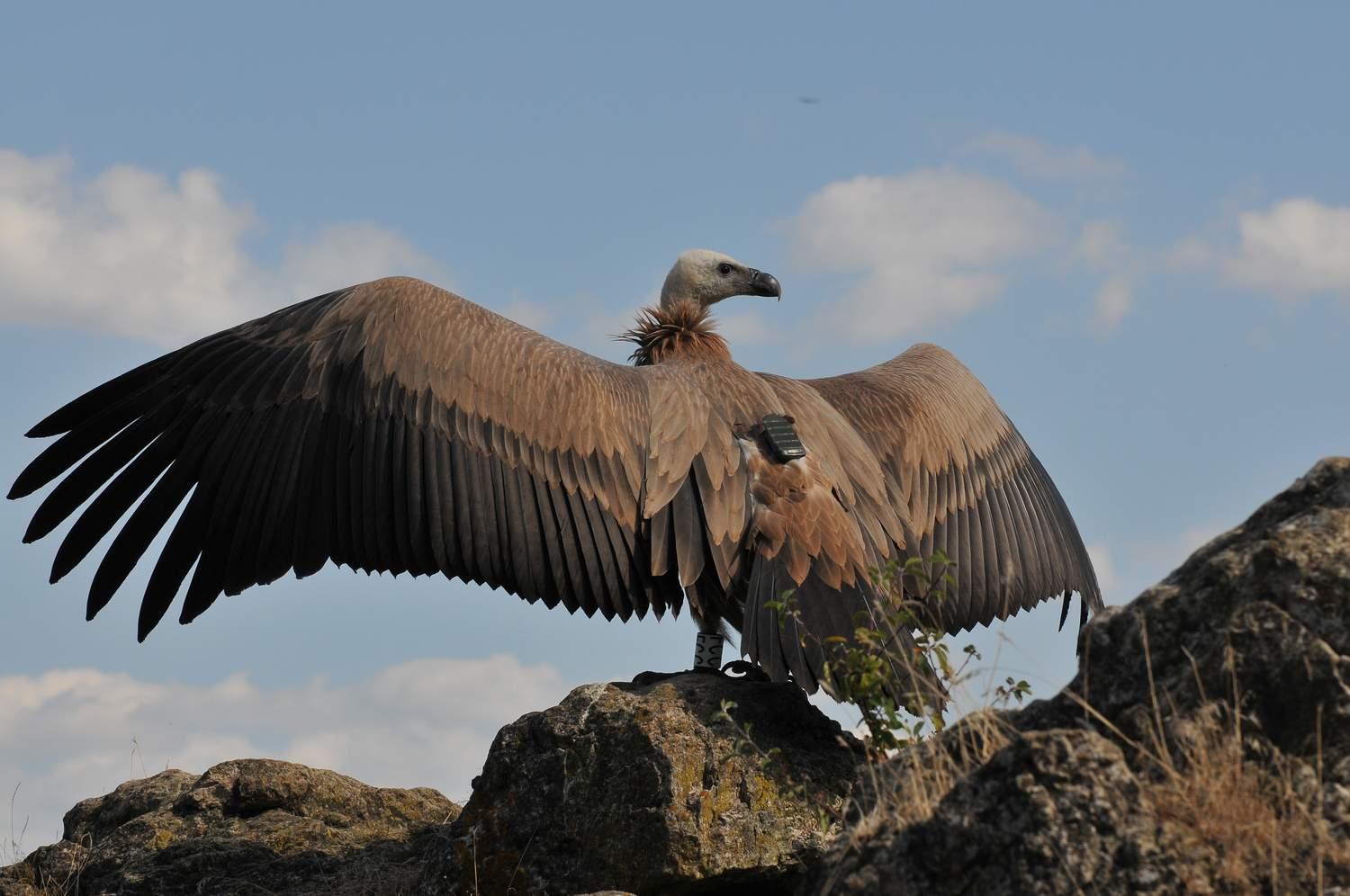
These birds which we once thought of as heavenly beings, who inspired our belief in angels and spirits which defended us from evil demons desperately need our protection. While we may no longer require them to dispose of our own dead they still serve a vital function within the food chain ensuring that the cadavers of wild and long-ranging grazing animals are safely removed from often delicate ecosystems. The spread of rabies in India has been directly related to the absence of vultures, and it is feared that if this pattern continues that this trend will continue to those diseases carried by rats, such as the Bubonic Plague. We should not allow ourselves to lose yet another of nature’s most amazing and wonderous creations, especially not one that has served us and become so integral to the beliefs that have made our own existence such a success.


Zoroaster and Buddha share numerous similarities and they laid comparative, if divergent, paths towards the attainment spiritual of enlightenment and (re)unification with the creator. The Tibetan Sky Burial was first documented in the Book of the Dead around the 12th century, while the Zoroastrians adoption of excarnation while practiced in some areas for at least 3,000 years, was indoctrinated as the official means of disposal of the dead during the Sassanid period, between the 3rd to 7th centuries, and is recorded in some detail in the Rivayat and Saddars. The Persians considered fire to be sacred and so, unlike the Greeks and Romans, considered cremation sacrilegious.

Jhator is the “giving of alms to birds” and is considered a fitting way in which to both express thanks and to compensate for consumption of meat during life. The Tibetans of course believe that the soul departs the body soon after death, transmigrating to a new body and new life, therefore, once dead, there is only meat, food for the vultures. The Rogyapa, or ‘breaker of bodies’ perform their task, with the same detached professionalism as a butcher, rendering the dead into bite sized pieces. As a mountain people to whom soil and wood are a scarce resource, every part of the body is given over to the vultures to consume with even the bones being ground down for the vultures to eat. Not a morsel is wasted.

Tibet, prior to the arrival of Buddhism 2,300 years ago, or thereabouts, was governed by kings or chiefs who were believed to have descended from the heavens via a magical ladder, an axis mundi which linked the three worlds of existence. The Bön religion that the people practiced was shamanic in nature and while Jhator is not understood to have been practiced, the spiritual nature of the sky and the birds was integral to their beliefs. The vulture, or God –bird, was considered to be particularly sacred, regarded as a Dakini, or feminine sky spirit. Much like the Egyptian Nekhmet, the vulture was considered a protector spirit, associated with motherhood and bestowing of divine king ship.


Today in the west this heritage has long been forgotten. In North America and much of Europe the vulture was erroneously associated with the spread of disease and suffered widespread, often systemised, persecution that led to them teetering on the precipice of extinction. While they are now protected species in most countries they are now under threat from the continuing use of Diclofenac.
Despite the Indian ban on diclofenac and it’s known toxic effect on vultures, it has recently been approved for use in Italy and Spain, home to the Griffon Vulture. Jose Taveres, director of the Vulture Conservation Foundation; "It defies common sense to approve of a drug when there is abundant, solid evidence to show that it is deadly to so many species of birds and that it causes such ecological damage. We now know diclofenac was responsible for the deaths of tens of millions of vultures in India. Several species were brought to the brink of extinction in the process. Once the Indian government realised that, it banned diclofenac. That was in 2006. Now two countries in Europe have decided to give it the go-ahead. It is simply appalling."

These birds which we once thought of as heavenly beings, who inspired our belief in angels and spirits which defended us from evil demons desperately need our protection. While we may no longer require them to dispose of our own dead they still serve a vital function within the food chain ensuring that the cadavers of wild and long-ranging grazing animals are safely removed from often delicate ecosystems. The spread of rabies in India has been directly related to the absence of vultures, and it is feared that if this pattern continues that this trend will continue to those diseases carried by rats, such as the Bubonic Plague. We should not allow ourselves to lose yet another of nature’s most amazing and wonderous creations, especially not one that has served us and become so integral to the beliefs that have made our own existence such a success.

For those who like things shorter and sweeter than I will ever be able to manage...
Incidently, given the association with motherhood that the vulture has, the vulture being the Egyptian hieroglyph for mother, and in conjunction with
the flail, for grandmother, my son and I are going to adopt a vulture for my Mum for Christmas.
www.vulpro.co.uk...#!adopt-a-vulture/c5d7
I think it's a perfect gift for mothers and grandmothers everywhere.
www.vulpro.co.uk...#!adopt-a-vulture/c5d7
I think it's a perfect gift for mothers and grandmothers everywhere.
What an impressive presentation! Very well done, informative and thought provoking!
I honestly had no idea how vital vultures were to our survival. Bats, bees and vultures; what other key components to our survival are we knowingly pushing to extinction?
I honestly had no idea how vital vultures were to our survival. Bats, bees and vultures; what other key components to our survival are we knowingly pushing to extinction?
I have been asked by a few people if I would prefer to be buried or cremated. My answer has always been feed me to the coyotes and vultures. I've
seen them completely dispose of large animal carcasses within a few days.
edit on 25-9-2014 by skunkape23 because: correction
Awesome job!
Totally cool subject and solid presentation. So many things I read in a day leave me feeling more stupid. This, on the other hand, was a breath of fresh air. I am better for reading it.
Totally cool subject and solid presentation. So many things I read in a day leave me feeling more stupid. This, on the other hand, was a breath of fresh air. I am better for reading it.
Wonderful well researched and very well written thread. Vultures are beautiful. Vultures are clean, their bald heads specially designed to be easy
to clean after insertion into a corpse.
Ravens and Crows are also carrion eaters, they have a bad rap for plucking out the eyes. However, a Crow's beak is soft and not sharp, they cannot open a carcass so they must wait for another carrion eater to break through the hide or skin, but the eyes are soft and easily pluckable.
Some people find such talk gruesome, it makes perfect sense to me.
Excarnation as you point out is sanitary. When I think about all the diseases we have burried in the ground, that have potential to leach into the groundwater, give me Vultures any day.
Ravens and Crows are also carrion eaters, they have a bad rap for plucking out the eyes. However, a Crow's beak is soft and not sharp, they cannot open a carcass so they must wait for another carrion eater to break through the hide or skin, but the eyes are soft and easily pluckable.
Some people find such talk gruesome, it makes perfect sense to me.
Excarnation as you point out is sanitary. When I think about all the diseases we have burried in the ground, that have potential to leach into the groundwater, give me Vultures any day.
a reply to: KilgoreTrout
brilliant thread ...nature has worked out the system for survival a long time ago...so we dumb ass humans come along and disturb the balance,we try and fix what we have disturbed with band aids and then wonder why it all went wrong....nature is the perfect system ...time has proven that...how do we explain that to those that run the show ?
brilliant thread ...nature has worked out the system for survival a long time ago...so we dumb ass humans come along and disturb the balance,we try and fix what we have disturbed with band aids and then wonder why it all went wrong....nature is the perfect system ...time has proven that...how do we explain that to those that run the show ?
originally posted by: nugget1
What an impressive presentation! Very well done, informative and thought provoking!
I honestly had no idea how vital vultures were to our survival. Bats, bees and vultures; what other key components to our survival are we knowingly pushing to extinction?
Thank you so much for reading, and I am glad you enjoyed it.
Regarding the bees, I was listening to the radio yesterday and they were discussing the ban on neonicotinoid pesticides, here in the UK and how farmers are grumbling because it is already resulting in an increase in flea beetles, which attack oil-seed rape seeds. So what? Adapt! We NEED bees. I know that it is going to affect the profits of farmers, and that the knock on effect will be that the cost will be passed on to consumers, but losing the bees is far, far worse. If the farmers lack the imagination to solve their own problems, we should perhaps point them in the direction of those marvellous 16 year old girls in Ireland who seem to have solved the nitrogen issue.
a reply to: skunkape23
I have always said that I want to be buried with an oak tree sapling in my chest, a romantic notion, but after working on this thread, I reckon vultures is the way to go, that, or they can put me in the shredder, make me into compost.
I have always said that I want to be buried with an oak tree sapling in my chest, a romantic notion, but after working on this thread, I reckon vultures is the way to go, that, or they can put me in the shredder, make me into compost.
I started this last night and just finished. What a great and comprehensive thread on a avian with such an fascinating cultural impact.
I will try to grab a photo or two of the Turkey Vultures that perch on one of my chimneys, they end up looking like gargoyles.
I will try to grab a photo or two of the Turkey Vultures that perch on one of my chimneys, they end up looking like gargoyles.
edit on 26-9-2014 by AugustusMasonicus because: (no reason given)
originally posted by: Iamschist
Wonderful well researched and very well written thread. Vultures are beautiful. Vultures are clean, their bald heads specially designed to be easy to clean after insertion into a corpse.
Ravens and Crows are also carrion eaters, they have a bad rap for plucking out the eyes. However, a Crow's beak is soft and not sharp, they cannot open a carcass so they must wait for another carrion eater to break through the hide or skin, but the eyes are soft and easily pluckable.
Some people find such talk gruesome, it makes perfect sense to me.
Excarnation as you point out is sanitary. When I think about all the diseases we have burried in the ground, that have potential to leach into the groundwater, give me Vultures any day.
Thank you so much, your appreciation always means so much to me and I just knew that you would think upon it on the same level as me. I found an amazing website that documents in photographs each stage of a sky burial, it had me completely mesmerised, but then I have books filled with autopsy and murder scene photographs. The eye-plucking of crows is gruesome I admit, not sure I'd like to watch that going on in too much detail, but in the scheme of things, waste not want not.
I have fallen completely in love with the vultures in the course of writing this. They are truly wonderful creatures. What you said about their heads being adapted to being easily cleaned makes great sense and reminded me that they also, evidently, pee down their own legs. Their urine too has adapted such a strong antiseptic effect as to kill anything nasty that they may have stepped in. How could you not love a species so perfectly adapted to it's niche in this world. I can fully understand why our ancestors considered them divine and hope that we can get back to that. In Tibet they still are, a Chinese soldier evidently shot one not too long ago and was pelted with stones by those who witnessed his offence.
originally posted by: hopenotfeariswhatweneed
a reply to: KilgoreTrout
brilliant thread ...nature has worked out the system for survival a long time ago...so we dumb ass humans come along and disturb the balance,we try and fix what we have disturbed with band aids and then wonder why it all went wrong....nature is the perfect system ...time has proven that...how do we explain that to those that run the show ?
That is exactly what I am trying to figure out and what keeps me learning. I don't believe that those that 'run the show' are any more 'evil' than anyone else, they are just ill-informed and poorly advised.
Which reminds me, I dreamt that the UN were discussing the plight of the vultures, in the end they decided to run a campaign alongside the one to save the donkeys. The mind, my mind, works in mysterious ways, they run these ads in the UK on the saving of mistreated donkeys, asking for donations. It all got blended in together in my dream-world, and I do like donkeys very much as well.
originally posted by: AugustusMasonicus
I started this last night and just finished. What a great and comprehensive thread on a avian with such an fascinating cultural impact.
I will try to grab a photo or two of the Turkey Vultures that perch on one of my chimneys, they end up looking like gargoyles.
Thanks for reading AM, I very much appreciate it.
The pictures would be great, I'd love to see them, I am becoming quite the vulture afficionado, but have mostly focused my reading on the 'old world' ones, I'd love to see your 'new world' vultures. I have tried to ascertain whether we had vultures at any time in the past in the UK, but all I could find was that one escaped from a zoo a few years back and flew all over the south of England inciting all kinds of excitement. There are rumours about some of the European varieties making their way over here, but it seems to be just that. They're just the most amazing birds, an airliner killed one at 37,000 ft, which I think makes it one of the highest flying birds known.
a reply to: KilgoreTrout
yea and no...money is the root of all evil....i am not religious all but if there were a false idol..money would be it.....
yes ill-informed yes poorly advised...money is one of those drugs ..once you have some you can never have enough...and once you have it you will do whatever it takes to hang on to it no matter who gets hurt along the way
That is exactly what I am trying to figure out and what keeps me learning. I don't believe that those that 'run the show' are any more 'evil' than anyone else, they are just ill-informed and poorly advised.
yea and no...money is the root of all evil....i am not religious all but if there were a false idol..money would be it.....
yes ill-informed yes poorly advised...money is one of those drugs ..once you have some you can never have enough...and once you have it you will do whatever it takes to hang on to it no matter who gets hurt along the way
new topics
-
TODAY IS A HUGE ELECTION DAY FOR AMERICA - November 5th 2024 - Reports from Around The Nation.
2024 Elections: 7 hours ago -
Joe Rogan Endorses Trump After Musk Interview
US Political Madness: 8 hours ago -
Trump is NOT Racist
Politicians & People: 9 hours ago -
"I'm seeing Red" by Jesslee and the Marine
Music: 10 hours ago -
Black Holes Could Be The Mysterious Force Expanding The Universe
Science & Technology: 11 hours ago
top topics
-
TODAY IS A HUGE ELECTION DAY FOR AMERICA - November 5th 2024 - Reports from Around The Nation.
2024 Elections: 7 hours ago, 17 flags -
Trump holds final campaign rally in Michigan before voting begins Tuesday
2024 Elections: 14 hours ago, 14 flags -
Joe Rogan Endorses Trump After Musk Interview
US Political Madness: 8 hours ago, 13 flags -
Kamala is running pro Palestine ads While simultaneously running pro Israel ads
2024 Elections: 14 hours ago, 11 flags -
Almost Home
Short Stories: 17 hours ago, 8 flags -
Black Holes Could Be The Mysterious Force Expanding The Universe
Science & Technology: 11 hours ago, 8 flags -
Trump is NOT Racist
Politicians & People: 9 hours ago, 7 flags -
"I'm seeing Red" by Jesslee and the Marine
Music: 10 hours ago, 6 flags
active topics
-
Transgender woman accuses Hooters of sex-based discrimination for refusing to hire her
Rant • 24 • : Moon68 -
The CIA's Dark Search for the Ark of the Covenant, and the Ark of Gabriel Explained.
Paranormal Studies • 18 • : BrucellaOrchitis -
TODAY IS A HUGE ELECTION DAY FOR AMERICA - November 5th 2024 - Reports from Around The Nation.
2024 Elections • 18 • : onestonemonkey -
New York State Government Kills Peanut the Squirrel and Fred the Raccoon
US Political Madness • 64 • : Moon68 -
Almost Home
Short Stories • 7 • : PorkChop96 -
British Man Jailed for over 2 Years for Shouting at Police During Protest has Died in Prison
Social Issues and Civil Unrest • 37 • : BrucellaOrchitis -
Black Holes Could Be The Mysterious Force Expanding The Universe
Science & Technology • 3 • : sapien1982 -
-@TH3WH17ERABB17- -Q- ---TIME TO SHOW THE WORLD--- -Part- --44--
Dissecting Disinformation • 3107 • : MetalThunder -
Trump holds final campaign rally in Michigan before voting begins Tuesday
2024 Elections • 22 • : tjack -
Mood Music Part VI
Music • 3692 • : BrucellaOrchitis
